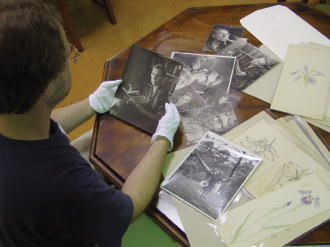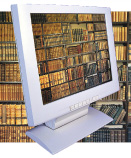AIC Seeks to Establish Standards for the Conservation of New Media Technologies
 The burgeoning field of electronic media preservation threatens to outpace the research available to prove its reliability in many cases. To address this issue, NCPTT awarded a grant to the American Institute for Conservation of Historic and Artistic Works (AIC) to convene leaders in the field to share their experiences. Results of the special session demonstrating electronic media's growing role in preservation are now available on the Web.
The burgeoning field of electronic media preservation threatens to outpace the research available to prove its reliability in many cases. To address this issue, NCPTT awarded a grant to the American Institute for Conservation of Historic and Artistic Works (AIC) to convene leaders in the field to share their experiences. Results of the special session demonstrating electronic media's growing role in preservation are now available on the Web.
The website covers a wide spectrum of concerns ranging from the philosophical and theoretical to the problems of actual real-world implementation. A broad approach was needed to properly address the diverse challenges inherent to the emerging field of electronic media in preservation according to Hannah Frost, media preservation librarian at Stanford University Libraries, and chair of the special session.
"By gathering a group of professionals from across the cultural heritage spectrum who are working on electronic media preservation projects, one recognizes that electronic media preservation is a praxis that is highly-specialized but nonetheless one that is not limited to any one field," Frost said. "Conservators must engage with information technologists, computer scientists, audio-visual engineers, educators, artists, curators, librarians and archivists who are also pursuing this work as we establish our role and voice in the effort to preserve media and digital information."
The website details abstracts and papers of the topics covered at the AIC session. Among the topics covered are recording, documentation and database issues, which includes techniques for audio reconstruction of music from phonograph plates and tubes by digital processing of microscopic digital imaging of the surfaces. Additionally, issues in digital video preservation worthiness are covered as most digital video storage methods allow for serious degradation after successive conversions or copies.
 The Electronic Media Group (EMG), a specialty group of AIC, organized the session. EMG meets annually to share information on the preservation of electronic-based cultural materials and tools of their creation, as well as to provide a means for conservators and related professionals to develop and maintain knowledge of relevant new media and emerging technologies.
The Electronic Media Group (EMG), a specialty group of AIC, organized the session. EMG meets annually to share information on the preservation of electronic-based cultural materials and tools of their creation, as well as to provide a means for conservators and related professionals to develop and maintain knowledge of relevant new media and emerging technologies.
Frost believes the PTTGrants program was well-suited as a source of support for the program because the two organizations share a common goal: to disseminate information about recent conservation research.
"EMG aims to stimulate discussion and advance methodologies for preserving electronic media within the conservation field—an area that is gaining both in need by collections and in interest by collection caretakers," she said. "This is a crucial time for developing best practices. We have much to learn from the pioneers working in the field, and they are equally eager to share their experiences and research results."
View the abstracts and papers on the electronic media session at http://aic.stanford.edu/sg/emg.